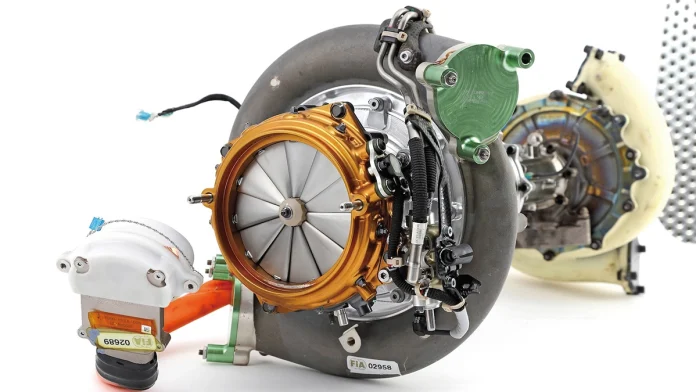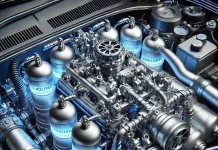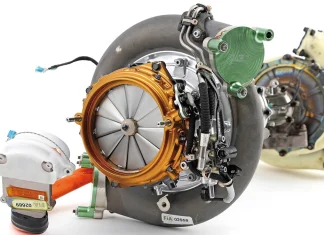Formula 1 isn’t just about speed; it’s a relentless pursuit of innovation. At the heart of this technological arms race lie groundbreaking prototype technologies, pushing the boundaries of what’s possible on four wheels. One of the most fascinating examples is the hybrid powertrain system, specifically the Motor Generator Unit-Heat (MGU-H) and Motor Generator Unit-Kinetic (MGU-K).
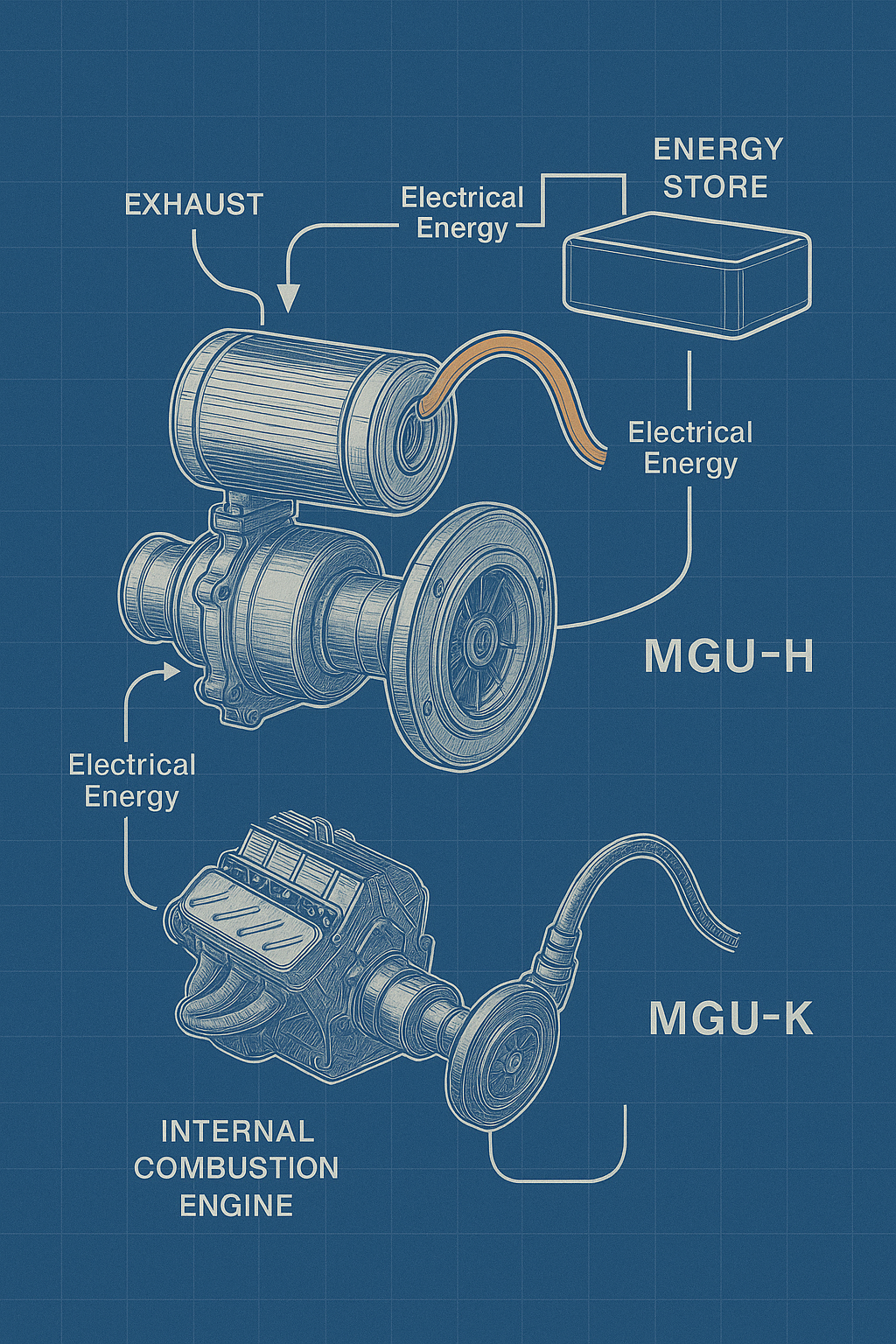
These aren’t your average engine components. The MGU-K, connected directly to the crankshaft, cleverly transforms the car’s kinetic energy – its movement – into electrical power. Think of it as capturing the energy normally lost during braking and turning it into a performance boost. Regulations allow this system to generate a maximum of 120 kW and spin at up to 50,000 rpm.
But that’s not all. The MGU-H, working in tandem with the turbocharger, takes energy recovery to another level. It harnesses the heat from the exhaust gases, converting it into even more electrical energy. Spinning at a blistering 125,000 rpm, the MGU-H adds another layer of sophistication to F1’s hybrid systems. Energy regulations specify that a maximum of 2 MJ per lap can be transferred to the Energy Store (ES) from the MGU-K, and a maximum of 4 MJ per lap can be sent from the ES to the MGU-K.
The MGU-H (Motor Generator Unit – Heat) and MGU-K (Motor Generator Unit – Kinetic) are revolutionary components in Formula 1’s hybrid powertrain systems, offering several benefits:
- MGU-H Benefits:
- Energy Efficiency: The MGU-H captures heat energy from exhaust gases and converts it into electrical energy, reducing waste and improving overall energy utilization.
- Turbo Lag Reduction: By acting as a motor, the MGU-H eliminates turbo lag, ensuring a seamless and responsive acceleration experience.
- Unlimited Output: Unlike the MGU-K, the MGU-H has no restrictions on the amount of energy it can generate or exchange with the energy store, providing flexibility in energy management.
- MGU-K Benefits:
- Regenerative Braking: The MGU-K recovers kinetic energy during braking and stores it as electrical energy, enhancing energy efficiency.
- Boost in Power: It delivers an additional 161 HP (120 kW) to the car during acceleration, giving drivers a competitive edge on the track.
- Regulated Output: While its output is capped, the MGU-K ensures consistent and reliable energy delivery, aligning with F1 regulations.

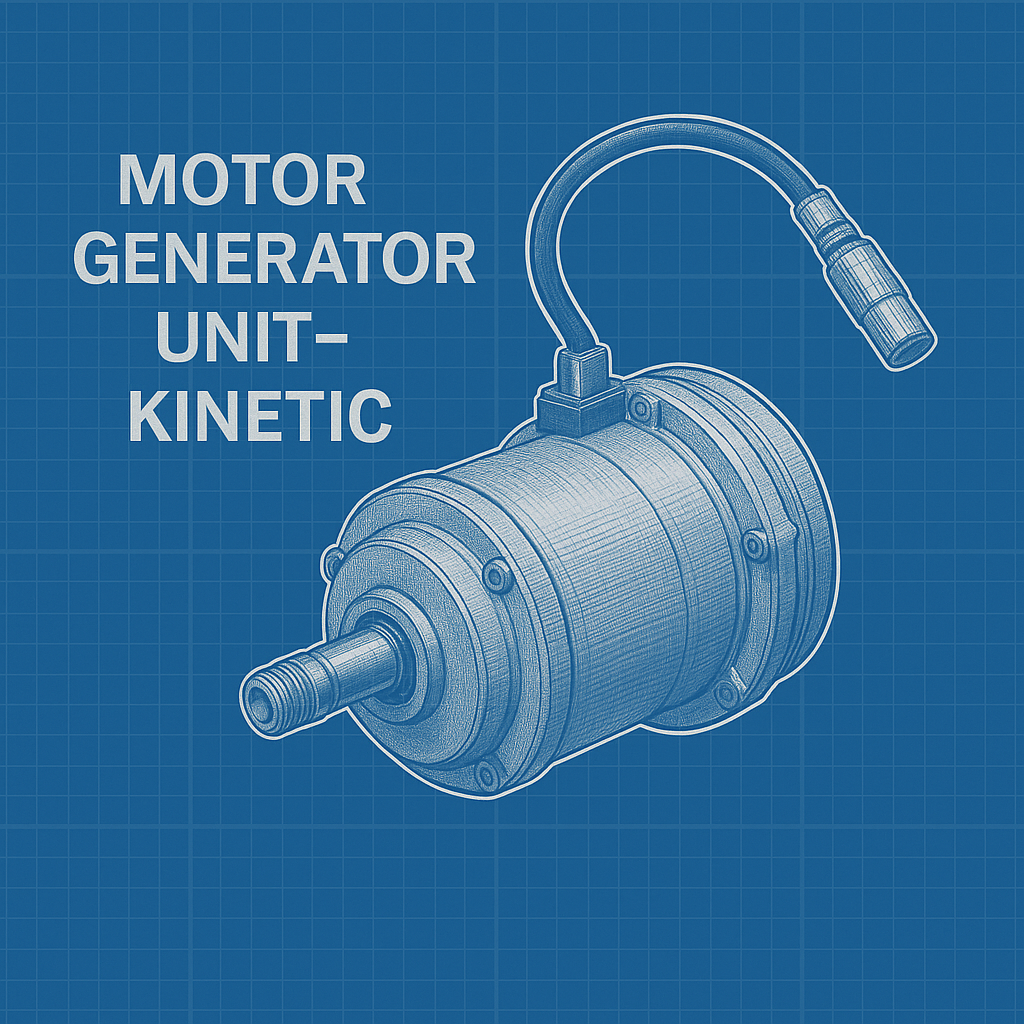
These systems not only elevate performance but also pave the way for sustainable and innovative automotive technologies.
Many of the advanced hybrid technologies used in Formula 1—like MGU-K and MGU-H—have influenced innovations in modern road cars. Here’s a list of similar or derived technologies and how they function in everyday vehicles:
🔋 Regenerative Braking
Similar to: MGU-K
How it works: Captures kinetic energy during braking and converts it into electrical energy to recharge the battery. Common in hybrid and electric vehicles like the Toyota Prius or Tesla Model 3.
⚙️ Mild Hybrid Systems (MHEV)
Related to: Simplified versions of MGU-K
How it works: Uses a small electric motor/generator to assist the engine during acceleration and recover energy during braking. Found in models like the Audi A6 55 TFSI e and Ford Puma EcoBoost Hybrid.
🔄 Turbocharger Energy Recovery (E-Turbo)
Inspired by: MGU-H
How it works: Electrically assisted turbochargers reduce turbo lag and improve responsiveness by harvesting exhaust heat. Mercedes-AMG’s new electric turbo (developed with F1 tech) is a prime example.
🔌 Plug-In Hybrid Systems (PHEV)
Derived from: Energy storage logic used in F1
How it works: Uses a large battery and electric motor alongside a combustion engine. The system intelligently balances power and energy recuperation. Found in vehicles like the Honda CR-V Hybrid, Volvo XC90 Recharge, and BMW 330e.
🔧 Smart Energy Management Systems
Parallel to: F1’s Power Unit Control
How it works: Software constantly analyzes driving behavior and optimizes energy use between motor, battery, and engine. Enhances efficiency and performance in hybrids and EVs (e.g., Lexus Hybrid Drive, Hyundai Ioniq systems).
🔄 Brake-by-Wire Systems
Inspired by: F1 braking energy control
How it works: Electronically controls braking force instead of a direct mechanical link. Allows for precise energy recovery blending and enhanced braking feel—used in many EVs and high-performance hybrids.
Please follow the link bellow:
Inside Honda’s F1 Hybrid Power: MGU-H & MGU-K Explained


